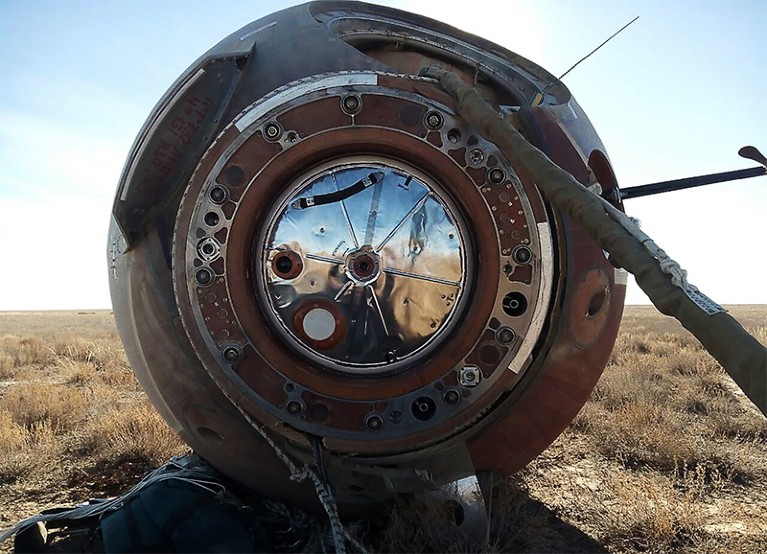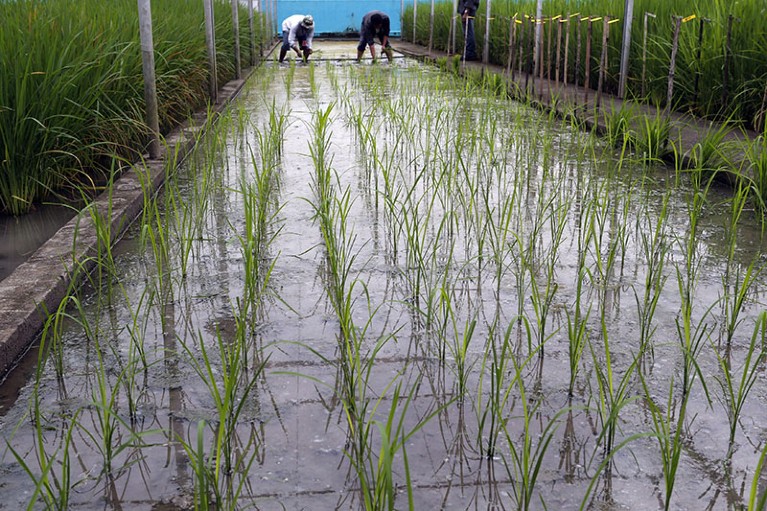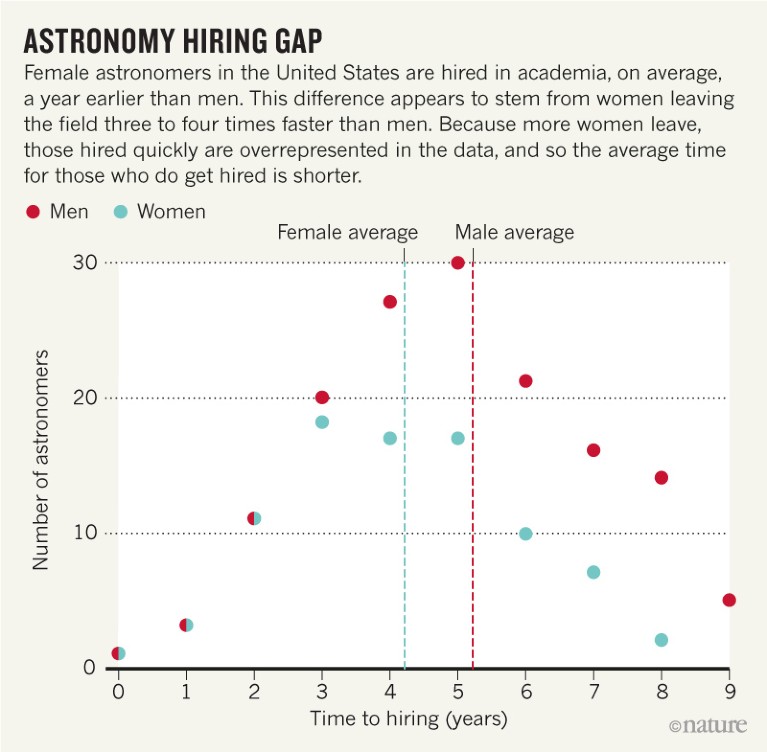EVENTS
Astronauts escape Soyuz rocket crash The Russian space agency, Roscosmos, is investigating why a Soyuz MS-10 malfunctioned on 11 October just after takeoff from the Baikonur Cosmodrome in Kazakhstan. The rocket was carrying Russian cosmonaut Alexey Ovchinin and US astronaut Nick Hague to the International Space Station. An alarm notified the crew of a problem with the rocket’s booster roughly 90 seconds into the flight. An automated system immediately detached the crew capsule from the rocket, and the astronauts began a ballistic descent — a steep, rapid dive to Earth. The capsule landed about 500 kilometres northeast of the launch site in Dzhezhazgan, Kazakhstan, and search-and-rescue teams took the crew to the Gagarin Cosmonaut Training Center near Moscow for medical attention. Roscosmos and NASA officials say that both crew members are doing well; Russia’s deputy prime minister, Yury Borisov, tweeted that Roscosmos will suspend crewed missions until it can guarantee the safety of launches.

The capsule that separated from a malfunctioning Soyuz rocket landed about 500 kilometres from the launch site in Dzhezhazgan, Kazakhstan.Credit: TASS via Getty
Climate win A court of appeal in The Hague has upheld a precedent-setting judgment that forces the Dutch government to step up its efforts to curb greenhouse-gas emissions in the Netherlands. In 2015, a district court in The Hague had ruled in favour of the Urgenda Foundation, a climate-change group that filed the lawsuit on behalf of 886 Dutch citizens. The foundation asked for more-stringent government action to protect the low-lying country from the harmful effects of climate change. The government appealed against the verdict, arguing that courts have no right to take decisions on this matter. The appeal judges disagreed. On 8 October, the court of appeal confirmed that the government must take measures to cut domestic greenhouse-gas emissions to at least 25% below 1990 levels by 2020. The court cites the state’s legal duty of care for its citizens, which is enshrined in the European Convention on Human Rights. Similar court cases are ongoing in several countries, including the United States, Belgium, Norway and Ireland.
POLICY
Looking down Australia should invest in a “downward-looking telescope” that could study mineral resources as far down as 300 kilometres beneath Earth’s surface. The proposal is one of several in an Australian Academy of Science report on the future of geosciences in the country, released on 15 October. A geological ‘telescope’ would consist of a network of geophysical remote sensors and geochemical sampling programmes. Geoscientist Sue O’Reilly at Macquarie University, who chaired the committee that wrote the report, says this approach is unique. Australia introduced the idea of digitally integrating information across geophysics, geochemistry, geology and tectonics, she says. The report highlights the need for Australia to find new sources of minerals that will be needed in vast amounts for a future based on low-carbon renewable energy. Copper and cobalt are essential components of electric cars, and rare earths are used in solar cells.
Alcohol warnings Public-health officials in Australia and New Zealand have welcomed the two governments’ 11 October decision that alcohol products must carry standardized labels warning about the risks of drinking during pregnancy. Such labelling is currently voluntary. Research suggests that labels can increase awareness about the effects of drinking during pregnancy, such as the risk of fetal alcohol spectrum disorder, which is the most common preventable cause of non-genetic intellectual disability in Australia. But warnings are unlikely to change behaviour by themselves.
PEOPLE
Ribosome pioneer Thomas Steitz, a Nobel-prizewinning biochemist, died of pancreatic cancer on 9 October. He was 78 years old. Steitz shared the 2009 Nobel Prize in Chemistry for determining part of the complex molecular structure and function of cellular machines known as ribosomes, which read RNA messages encoded by DNA, translate them into amino-acid sequences and then assemble those amino acids into proteins. The discovery revealed that many widely used antibiotics kill bacteria by binding to the cells’ ribosomes and disrupting their function. Steitz worked at Yale University in New Haven, Connecticut, for 48 years. His wife, Joan Steitz, is also a biochemist at Yale and won the 2018 Lasker-Koshland Special Achievement Award in Medical Science for her own work on RNA biology.
FACILITIES
Rice-diversity boon A major global repository of rice biodiversity has secured permanent funding. The International Rice Research Institute gene bank, based in Los Baños, the Philippines, harbours some 136,000 varieties of rice and its wild relatives — resources that scientists can study and that breeders can use to develop new kinds of rice. On 12 October, the Crop Trust, a non-governmental organization in Bonn, Germany, that supports food security and crop diversity, announced funding of US$1.4 million a year “in perpetuity” to support the gene bank. Rice is a staple food for almost half the world’s population (pictured, golden rice), and new varieties could help to maintain crop production in the face of increased drought, flooding and other manifestations of global climate change.

Rice is a staple food for almost half the world’s population.Credit: Erik De Castro/Reuters
AI investment The Massachusetts Institute of Technology (MIT) in Cambridge has committed up to US$1 billion to set up a new college for artificial intelligence and computer science. An initial $350-million donation by Stephen Schwarzman, chief executive of investment firm Blackstone in New York City, will help to create 50 new faculty positions and construct a building for the college, according to a 15 October announcement. Half of the posts will be joint appointments with other campus departments to enable research and education across disciplines, including the ethics of ground-breaking technologies. The goal is to educate students so that they are proficient in computing as well as their main field of study. MIT has already raised a further $300 million and is working to raise the remainder. The college is scheduled to open in September 2019.
SPACE
Hayabusa2 delay The mothership of the Japanese probe Hayabusa2 will make its first touchdown on the Ryugu asteroid in January, instead of this month as originally planned. On 14 October, the Japan Aerospace Exploration Agency said it had determined that the asteroid’s surface is rougher than expected, and so has decided to take more time to plan the landing. This part of the mission — which will collect a sample of the asteroid to be brought back to Earth — is the most important, but also the riskiest. Hayabusa2, which carries several smaller probes, launched in late 2014 and reached Ryugu in June this year, aiming to return samples to Earth by 2020. Hayabusa2 is hovering over the space rock at varying altitudes and has already deployed three small landers, which have sent back images and data from the surface.
RESEARCH
Stem-cell studies Harvard Medical School and Brigham and Women’s Hospital (BWH) in Boston, Massachusetts, have called on journal editors to retract 31 papers co-authored by Piero Anversa, a former BWH lab director, after their investigations concluded that the studies contained falsified or fabricated data. The papers focused on cardiac stem cells, which Anversa claimed could be activated to allow damaged heart tissue to regenerate itself. In 2017, Partners HealthCare System, which runs BWH, agreed to repay US$10 million to the US government to resolve allegations that Anversa’s lab had fraudulently obtained federal grant funding. The lab closed in 2015. Earlier this year, Anversa was selected to be an expert adviser at Italy’s National Institute of Health in Rome. He withdrew his candidature after objections by Italian scientists.
TREND WATCH
Women with astronomy PhDs are leaving the field before landing a faculty job at a rate three to four times higher than that for men, a study of crowdsourced hiring data in the United States has revealed. Kevin Flaherty, an astronomer at Williams College in Williamstown, Massachusetts, collected hiring data for 2010 to 2017 from the Astrophysics Jobs Rumor Mill, a website where astronomers can anonymously aggregate information about the status of open fellowships and faculty positions. He found 245 reports of tenure-track faculty positions in US universities that went to 157 men and 88 women. By Google-searching the year each astronomer received their PhD, he found that women landed their faculty jobs, on average, a year sooner than did men (K. Flaherty https://arxiv.org/abs/1810.01511; 2018). To try to explain this, Flaherty created a model of the labour pool with hires and departures, and ran three scenarios: one, that more women were receiving astronomy PhDs over time; two, that female astronomers were more likely than men to be hired; and three, that women were leaving the field at a higher rate than men. The third model fit the data best.

Source: arXiv/Kevin Flaherty






